Gold King Mine: Big Government Colorado Screw-up Just Tip of the Iceberg

On August 5, a team of government employees working in Colorado’s historic Alpine Loop region uncorked a sealed-up old mine entrance. The old seal was holding back a large volume of old mine water. The ensuing flood made a big old mess.
This mess is a hazard to the water supply for Southwestern Colorado and several states downstream. It threatens regional tourism, threatens farmers, and threatens businesses in communities that live, work and play in the Animas Valley and points downstream. This is also a mess for the EPA, the federal government, state officials and several private parties, putting them under a lot of scrutiny; scrutiny that’s revealed some uncomfortable truths about the effect of federal bureaucracy on regular people – the “We” in “We the people...”
How does the “EPA Mine Spill” affect you, the Off-Road.com reader?
- Enjoy off-roading in Colorado?
- Want unimpeded trail access, free to make your own adventure?
- Like to visit towns like Silverton and Durango (just downstream from the EPA mine spill), which are heavily invested in supporting off-road and trail-access activities?
- Revel in exploring the remnants of history that litter Colorado’s high-mountain country?
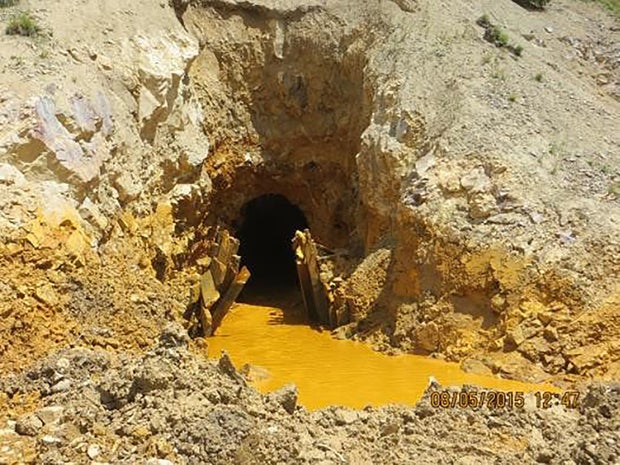
If this spill is allowed to become a fresh leverage point for the federal government to assert new authority over state and local property, more of backcountry terrain could be subjected to federal regulators’ whims, and rendered off limits. From cleaning up this spill to pushing mountain communities into mandates handed down from the bureaucratic monolith in D.C., the EPA’s mine spill is the tip of a statist iceberg.
Consider restrictions to our access to the American countryside because of the federal bureaucracy’s access-smothering ways. What happened to off-roading in California’s Glamis dunes because of a supposedly endangered milk-vetch? What’s happening in western Texas because of the sagebrush lizard? What about portions of the Pacific Northwest, where an entire industry was nearly destroyed (timber) to save an owl that, after actual research, appears to do better on logged hillsides? These are but a few examples of popular terrain being closed off by the government (often with help from influence groups in a process called “sue and settle”). Your freedom to enjoy your land was stripped, and even when faulty evidence supporting the government’s actions was exposed, reopening access is never as easy as leaving it alone.
Facts and Understanding About Hard-Rock Mines and the EPA Mine Spill
By now you should know the basics: just northwest of Silverton, near the old townsite of Gladstone, a plug in a mine portal (an adit, technically) to the Gold King Mine was popped open by an EPA backhoe. The EPA crew had been working the same portal a year earlier but did not finish, and built an earthen dam to protect their doings over the winter. Despite having left the partially disturbed seal unattended while it endured the rigors of a high-mountain/deep-freezing/avalanchey winter, the EPA crew renewed digging without reevaluating the condition of the portal or water levels behind it.
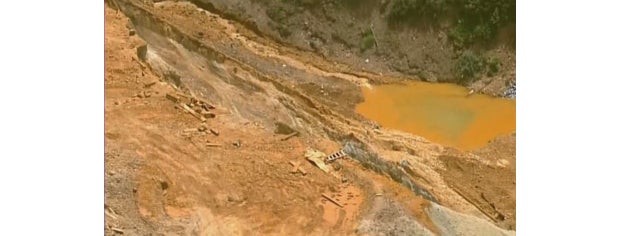
While we could debate the logic of using construction machinery to do the delicate autopsy of an old, untested wood-and-rock mine plug with unknown pressure bearing down on it (or known, if the EPA had listened to local experts or the mine’s owner), that’s what the EPA did: dig out the portal with heavy equipment like a little kid who couldn’t wait to pick a scab. In doing so, the EPA unleashed at least 3 million gallons of old mine water.
To compare, the mine had leaked 5,000-10,000 gallons per day before the EPA started in on the seal, about the amount of a small mountain brook – this is typical. While the exfiltrating mountain juice was flowing at brook-speed, it was being treated in nearby catch-ponds (an eyesore, but also an effective method of managing the minerals in the water). When the seal was penetrated, the mine began vomiting Tang at 3 million gallons per screw-up (it took an hour to drain). At this point, all that could be done was start dreaming up excuses. Post-backhoe, the mine leaks more than 350,000 gallons a day, a rate approaching what scientists have dubbed Ludicrous Speed.
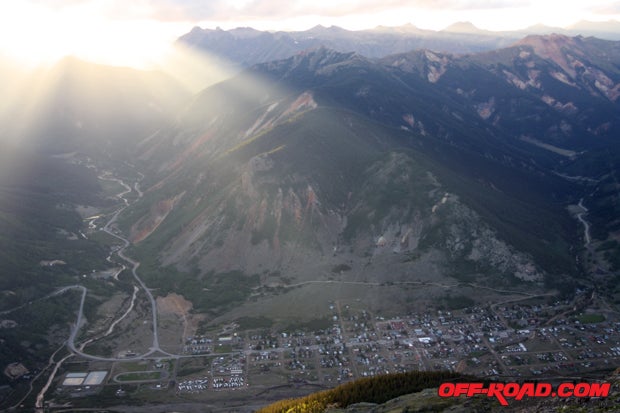
Mining Company Experience with EPA Breeds Concern and Mistrust
Prior to the EPA digging open the Gold King portal, the mine’s owner (Todd Hennis, of the San Juan Corporation) had blocked them from doing so. In response, the EPA began fining him $37,500 a day for obstructing their efforts. After $300,000 of fines built up, the EPA got the permission they wanted.
Nice place you have here. Be a shame if something happened to it.
The Gold King owner’s mistrust of the EPA was rooted in experience. His company had dealt with heavy-handed Feds before, including having the selfsame agency secretly dump mining sludge in one of their mines in Leadville, CO, in 2005. That spill (if it’s intentional, is it a spill?) subsequently flowed into Leadville’s water supply through a drainage tunnel in the mine that the government itself had installed. Hennis’s mistrust was amplified by the fact that this secret dumping occurred after years of EPA efforts to have Leadville submit to Superfund oversight so parts could be turned into a “federal recreation area.” It’s tales like this, of extralegal behavior committed in the name of “the environment,” that help fuel Coloradoan’s disdain for the EPA.
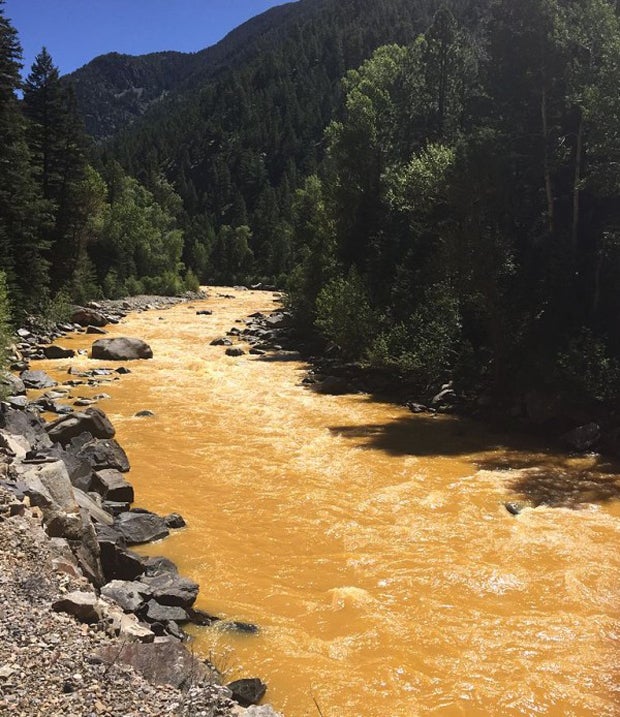
What is a Superfund Site?
Superfund cleanups, which began under the Reagan administration, go after toxic or chemically hazardous areas that don’t have culpable ownership. Think of a leaky old paint factory with a bankrupt owner, or, in the case of Colorado, old mine sites that have lots of what was in the mountain now piled up outside of the mountain. In theory, a good tool, but give it to Big Bureaucracy and it’s a blunt object that can cause immeasurable damage.
What’s in Your Orange Mine Water?
Ore-rich mountains in Colorado are full of valuable substances with funny names – why do you think they mine here? Additionally, as is typical of hard-rock mining operations, those ore-rich mountains are full of water. Therefore, imagine a stew made with those minerals. In this gold- and silver-rich area, the groundwater is laced with metals like cadmium, metalloids like arsenic, plus fluorine, beryllium, copper, uranium, mercury, and many other trace substances.
The mountain soup of which we speak might sound ewwww, but it’s typical of high-mountain Colorado. Locals understand that any water in the area is going to be rich in minerals; some good, some not so. The historic effect of these minerals is everywhere, and cumulative: Cement Creek, the stream that carried the EPA’s spill to the Animas River, was already a dead creek. Locals say it “ran brown” because of the mineral content of the water that flows out of the mountains into the creek. Nothing lives in it. Locals would again tell you that this is normal.
What’s not normal is the EPA’s experts digging at a plugged mine full of this mountain juice. All mines leak, but the seal was holding. Ask yourself why the EPA dug how they did – locals do.
Local Perspective on the EPA and the EPA Mine Spill
With Americans’ growing distrust of “government” and of the federal golem’s assurance of “I’m with the government and I’m here to help,” you can appreciate concerns of Coloradoans living in areas affected by the EPA mine spill. There are many towns downstream of this spill like Silverton, Hermosa, Durango and Farmington, plus the Navajo nation and cities along the San Juan River, Lake Powell and the Colorado... Whoops... Have sediment plume, will travel.
In a Watchdog.org story by Tori Richards, Silverton Town Board Trustee David Zanoni laid bare the concerns and resentment borne the EPA by folks in Colorado. “Whenever we hear the ‘EPA’, we think Superfund,” said Zanoni. “They say ‘We want to work together.’ That’s BS. They want to come in and take over. The water up here is naturally filled with minerals. They don’t need to be cleaning up.”
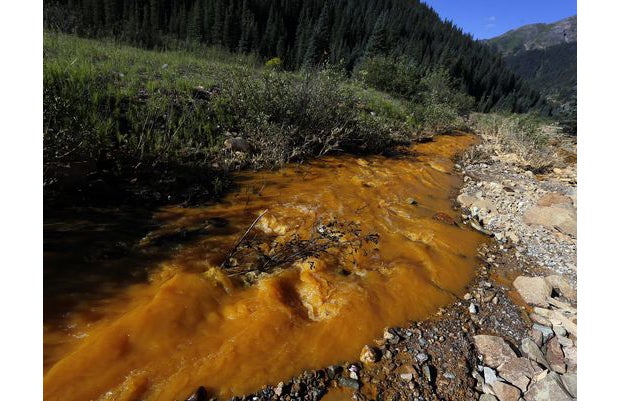
These sentiments and more were reflected – with some vigor and venom – at an EPA meeting held following their spill. The town-hall style setting, which may have be intended to allay fears and placate the locals, left federal and state officials looking sheepish, and attendees no less agitated. If for no other reason than to gauge the color of the local mood, take a minute or three to see it for yourself. Warning: some of these folks are so upset it’s a little gut-wrenching: Animas River/Gold King Mine EPA Public Meeting August 9, 2015 below.
Get the Flash Player to see this player. |
Towns at the heart of the Animas River region are directly affected by this spill. Take Silverton, for example, it’s surrounded by mine country, near the head of the Animas. It’s the only city in San Juan County, just downstream from the EPA’s Ground Zero. The town was created by mining, bore the same fruit and suffered the same tragedies as its miners, and was once so important to Colorado it was considered a potential capitol. It now survives as a gathering point for the adventure and tourism sparked by that history, plus as a stepping-off point for off-roaders, campers, hikers, bikers, trail dogs and rock hounds (railfans too, if you like big steam). The EPA – a device of a federal bureaucracy that increasingly personifies statism – threatens all that.
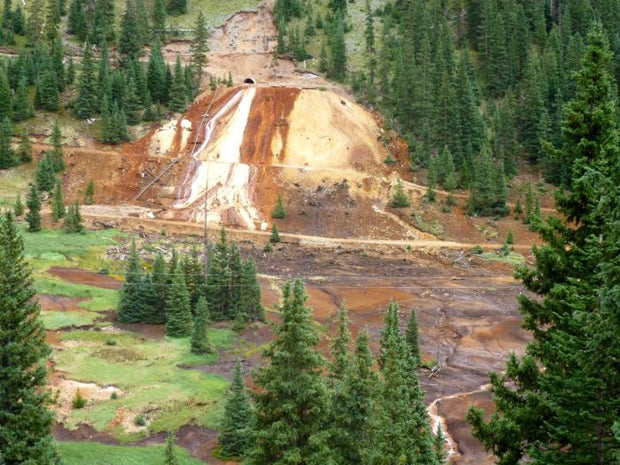
Silverton businessman Jim Lokey, who owns and operates the Red Mountain Motel & RV Park with his wife, regarded the EPA’s spill an inevitability. “What did you expect? Everyone knew it was going to happen. When the EPA started picking around like that when the pressure behind that bulkhead was obvious... It’s like sticking a pin in a balloon,” he said. “The thing about hard-rock mining, when you dig a hole in a mountain, it’s inevitable you’ll run into water, and some of these holes are very, very deep.
“The mine companies are still responsible for these things, but they’ve been allowed to skate for years. And when the owners did offer to help with cleanup, the EPA was ignoring their offers, even though the mine owners know what they’re doing instead of picking around like kids in a sandbox. Why do you think the town’s voted against [the EPA’s] Superfund deal again and again? We don’t want to be controlled, where they [the EPA] comes in and tell us what they think we should do. We’ll do it.”
Lokey then reflected on the town’s resurgence as an off-roading and tourism nexus, as well as Trustee Zanoni. “Off-roading is crazy-busy with folks who come here and stay here, but daily Jeep rentals have gone way down since the spill. The day-trip folks aren’t coming up because they can’t take the river back down since the EPA messed it up. Dave? He’s a good guy. He’s a local plumber, on the fire department, a big off-road guy. We need more like him.”
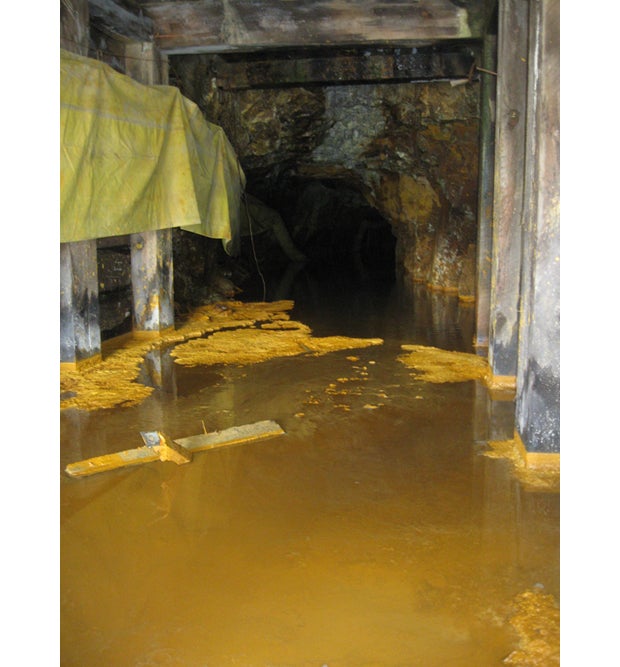
The anti-overreach, anti-Superfund sentiments of Coloradoans living with the impact of the EPA mine spill were echoed by Todd Hennis. Contrary to early reports – some from the EPA – Gold King had been targeted for redevelopment to extract another mineral, tellurium. Hennis was adamant: “Superfund is not the answer. It’s devastating to local communities... The solution is to get Colorado to force Kinross Gold to comply with the federal clean water act and existing state regulations.”
Mine Versus Mine: Water Buildup, Plugs and Overflow
A side-story is developing about the source of the water now barfing out of the Gold King Mine. Hennis, the owner of the Gold King, stated that another mining operation penetrated his mine, which allowed the other mine’s water problems to affect Gold King and those nearby. The “other” mine is the legendary, enormous and previously profitable Sunnyside Mine, which is on the other side of the mountain from the Gold King, and is owned by a multinational called Kinross Gold that appears to specialize in digging up entire mountains.
This sort of mine-interconnectivity happens a lot. It was so common in heavily mined regions of Colorado that in some high-mountain areas, citizens would travel from town to town through a mountain to avoid bad weather. However, it is not always legal.
While the source of the water from the EPA mine spill has yet to be pinpointed, Hennis has been reminding the public of his repeated efforts to provide evidence that the Sunnyside’s water is moving into Gold King, of the Sunnyside’s historic water problems, and his previous flood predictions based on those water problems (some as yet unrealized). He also stated that his reports to the EPA and state officials about these hazards have been largely rebuffed.
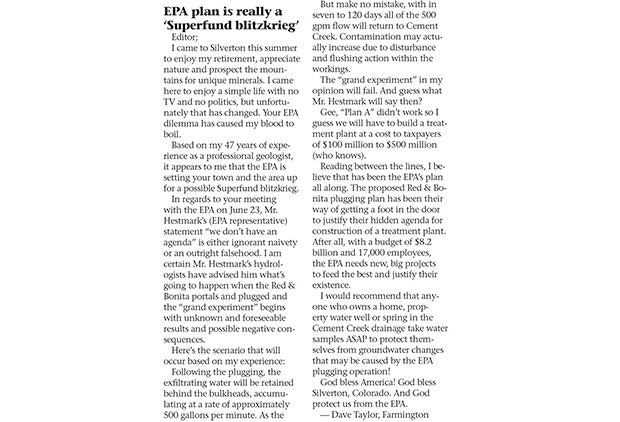
Seeing the Hallmarks of Big Government Behind the EPA Mine Spill Responses
Remember, statist behavior does not manifest as a one-two punch, and its hazard is shrouded in many small steps, the proverbial death by a thousand cuts. Learn to identify the agenda; watch government agencies create or latch on to a crisis; track how they exploit said crisis and then leverage actual improvements as a Trojan horse for unaffiliated or unnecessary regulations; and then they regulate and litigate until you capitulate. Or, as more and more Americans have decided, just say No to overpowering central bureaucracy, because the EPA mine spill (and crises like it) are what Big Government uses to punch holes in your liberty. As they say, never let a crisis go to waste.
So, Was the EPA Incompetent?
Possibly. There were warnings about the potential for lots of water lurking in this mine from outside geologists, historians, passersbys, locals, miners and amateur spelunkers, and a five-year old at the beach can tell you that once you start fiddling with a wall that’s holding back water, it’s probably going to let go.
Unfortunately, “incompetence” is an excuse used so often by this White House and its agencies (health care? hacking? emails? Iran? gun running? illegal immigration? ISIS?) that it rings hollow. Instead, try to consider the effects of the EPA’s actions that are labeled “incompetence” on their merits (or demerits), and this spill looks a lot more like nom de plume for other things.
Efforts to Conceal or Rebrand Inconsistencies and Mistakes?
Pure warning signs of something to hide... The EPA originally stated they’d only breached the retaining wall of a catch pond. According to trained observers, the EPA also claimed they were going to seal several other mines “to see what happened,” and then went after the Gold King plug instead. Why was the digging happening? Who was responsible? Where was the contingency planning? Was the purported issue the issue at all? Are the trickle-down effects of the EPA’s actions were far more suspicious than the mistake at the mine itself?
The smell of obfuscation and evasion has given indication there’s something more than “incompetence” here. Do inconsistencies make you suspicious? Numerous non-truths sprung up early on. One or three million gallons? Which mine was leaking? Who diverted what? When? Then, signs of active avoidance of responsibility started stacking up. How long did it take the EPA to warn affected municipalities of their spill? Why was the EPA going from door to door in downstream communities trying to get folks to sign waivers? Wasn’t the EPA warned in advance? Is there evidence warnings were ignored?
There are also cases of the EPA attempting to control information. Why did the EPA take down the project’s website? Why is the EPA refusing to provide documents requested by the congressional committee investigating the spill? Why didn’t EPA head Gina McCarthy visit the spill site? Why are EPA representatives trying to reduce the public’s perception of crisis linked to the 3 million gallons of effluent? Why did the governor drink from the Animas days later when it’s a sediment problem, not a water problem? Indeed, isn’t this the same EPA that is being investigated for its own Hillary-style concealed-email imbroglio?
“In Soviet Russia, road forks you!” Yakov Smirnoff.

Polish That Turd: Call an Ass your Friend and You’ll Still Get Kicked
Allow your author to put on his professional PR hat for a minute: rebranding a message is a cornerstone maneuver for crisis PR, be that message “Big Macs make you fat” or “The EPA just dumped mine water into our river,” and this White House is well-acquainted with it.
Imagine getting a flat tire on the trail. The message is “We need to stop and change a tire – grab the jack.” When someone in your group then states “Hey, it’s nice to take a break and get out of the truck for a while,” that’s rebranding a message. Imagine your government doing the same.
Applying the Sniff Test to the EPA’s Mine Spill
Of course, the populist media has made very little of the EPA mine spill – national coverage has been limited at best, missing at worst. Remember the attention paid the BP well blowout in the Gulf of Mexico just five years ago? It was, and is, regularly written about.
The sniff test tells you a lot: what if the Bush administration had caused this mess? Because this spill points at a statist White House, the press is hard-pressed to give it the harsh light of truth. With this spill, local governments can’t be blamed, corporations can’t be blamed (though several international corporations may prove culpable), and conservatives can’t be blamed.
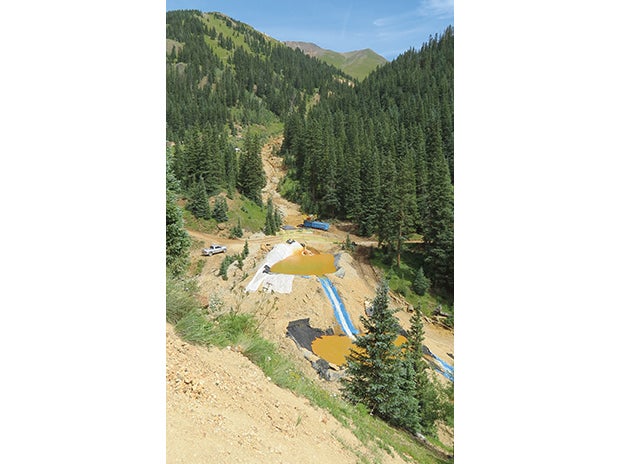
Does the EPA Have a Secondary Agenda?
Probably. It’s no secret that the EPA has been trying to convince officials in Silverton to declare the town a toxic site, despite tests that show it is not. Dovetail that with the hungry look the EPA has developed under the Obama administration: very few new 100-year old mines are being created. However, as cleanups run out, the funding hasn’t.
This has left a voracious taxpayer-funded semi-autonomous bureaucracy with an ever-increasing rulemaking authority with less and less to do. The EPA’s meteoric funding increases have made it like a hammer in need of a nail – sooner or later, it’s going to pound whatever it can, because that’s what hammers do, or a bureaucratic black hole, gobbling up more and more minor justifications, instead of declaring itself finished and winking out of existence. Remember, “big government” grows for government’s sake, like a self-worshipping religion, or cancer.
Ironically, money proposed by the White House for the EPA’s 2015 clean-water budget is down, while “climate change” is slated to rise.
And What of the EPA’s Outspoken Plan to Control More Water?
Never letting a crisis go to waste? Logic seems to fold in on itself when the people responsible for causing damage benefit from said damage. While it claims to have mistakenly made a small mess in Colorado, the results of the EPA’s mine spill into Cement Creek and the Animas River dovetails neatly with their declared intent to assert control over more local waterways.
This is a nice creek you have here... Be a shame if something happened to it.
Is the EPA’s Action Evidence of Statism (“Big Government,” A.K.A. Socialist)?
Yuppers. The EPA’s actions in Colorado tie more and more local issues to Washington D.C., which in turn controls more and more non-federal activity (the definition of statism). In fact, using environmental concerns as an excuse for exerting federal control is where the term “watermelon environmentalist” was coined: green on the outside, red (like socialism – get it?) on the inside. The EPA’s efforts to convince whole municipalities to subject themselves to federal Superfund authority in the name of “environmentalism” stinks of this. Given the right (or wrong) circumstances, this could turn a hamlet like Silverton – one that’s succeeding despite at having been outmoded – into a graveyardor a “federal recreation area” like Leadville. Silverton would become another lost relic instead of an historic icon of American can-do spirit and hard work.
Speaking of hard work, hard-rock mining has returned in several locations in Colorado because the value of certain minerals has made it profitable again. Does a government agency that claims it wants to clean up your municipality but will not do so without being given overriding jurisdiction sound like it’s likely to issue permits for new mining projects (read: jobs)?
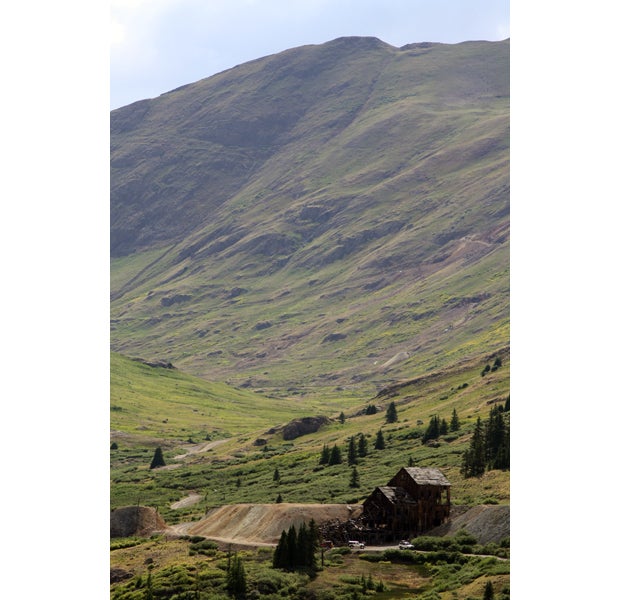
Protecting Colorado for Off-Roading Means Protecting Colorado
Colorado is adored by off-roaders, and it’s under attack. What are you going to do about it? Off-roaders flock to the state for the access created by its history: great trails at high altitude to awesome places where history happened. So many historic mines, ancient structures and old workings; there are many places to go, and many things to see.
That’s all put at risk by the pollution unleashed by the EPA. Its actions at the Gold King, and in Colorado, are emblematic of the agency’s overreach and bloated – statist – government. Because of this bureaucratic overreach, mountain communities affected by the EPA mine spill now find themselves a microcosm of the threats the federal monolith poses to our freedoms at large. Our off-road way of life – an American way of life – is always vulnerable to the Big Government our ignorance helped foster.
No one is against cleaning up some pollution. Responsible off-roaders are always picking up shot-up cans, discarded water bottles and broken mountain bikers. In fact, off-roaders like their backcountry as clean as the next guy, and are well equipped to keep it that way.
The EPA’s mine spill is more than just another government screw-up. Silverton and Durango, and Colorado in general, represent something very American – a state of freedom, of adventurous spirit, of do-it-because-I-can independence – which is threatened by the actions of a government agency with a long track record of self-interested single-payer environmental activism – the so-called Environmental Protection Agency. Unmitigated, the EPA could take over a town – Silverton, for example – or any town along the Animas watershed, and dictate how roads are used and where people go, putting huge swaths of countryside and backwoods terrain under the boot of government. That’s not American at all, but it is something else.
Sources:
EPA’s Gross Negligence at Colorado’s Gold King Mine
By Paul Driessen @ Ammoland.com, August 17, 2015
EPA: We misjudged pressure in gold mine before spill
Steve Garrison @ The (Farmington, N.M.) Daily Times, August 11, 2015
Exclusive – Geologist Who Predicted EPA Spill: ‘They Just Didn’t Think’
Michael Patrick Leahy @ Breitbart News, August 13, 2015
Mine owner blames other mine in spill
The Media Broadcast Network
Mine owner: EPA record of toxic dumping dates back to 2005
Tori Richards @ ColoradoWatchdog.Org, August 17, 2015
EPA withholds mine spill documents from Congress
Tori Richards @ ColoradoWatchdog.org, August 25, 2015
A Tour Of The Gold King Mine After Animas River Spill
Rick Sallinger @ CBS Denver, August 19, 2015
Cost of EPA's toxic spill could soar to nearly $30 billion
John Siciliano @ The Washington Examiner, August 18, 2015
Yes, that letter to the editor about the EPA was published...
Dave Taylor c/o Mark Esper @ The Silverton Standard, July 30, 2015


 Your Privacy Choices
Your Privacy Choices